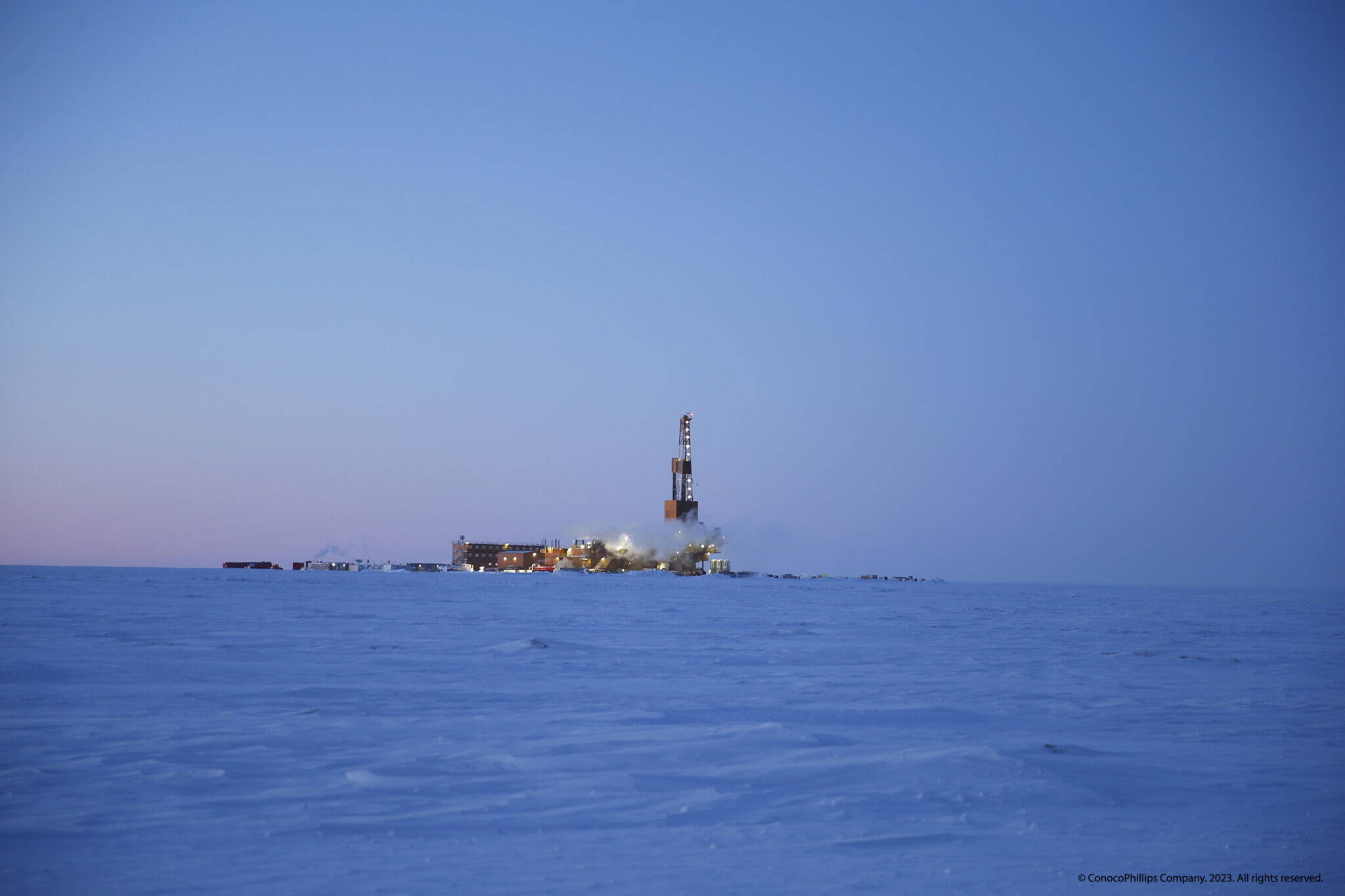Nine months after the Biden administration approved it, ConocoPhillips Inc. announced it has officially sanctioned full development of its huge Willow oil project on Alaska’s North Slope.
“We are excited to reach this significant milestone,” Ryan Lance, ConocoPhillips’ chairman and chief executive officer, said in a statement about the final investment decision. “With this project authorization, we’ve begun winter construction and Alaskans have started to receive the benefits from responsible energy development.”
Willow, with an estimated 600 million barrels of reserves expected to be produced over its lifetime, is set to be one of the biggest North Slope oil fields to be put into operation. From its location within the National Petroleum Reserve in Alaska, it is also set to be the North Slope’s westernmost producing oil field. First production is expected in 2029, according to the company.
Construction is already underway, with about 800 employees and contractors at work on the project, according to the company. The project has the potential to create over 2,500 construction jobs and 300 long-term jobs that last beyond construction, the company said in its statement.
The project is embraced by Alaska political and business leaders as critical to preserving the North Slope’s oil operations. Willow is expected to supply up to 180,000 barrels per day at peak operation, which is more than a third of average daily production in the fiscal year that ended on June 30.
North Slope oil production peaked in 1988 at over 2 million barrels a day and has declined since then as reservoirs aged and became depleted.
Lance, in the company statement, referred to the project’s backing in Alaska.
“We are grateful for the many supporters who advocated for Willow. Alaska Native communities and groups, especially those closest to the project on the North Slope, continually provided input that helped shape this project. We also appreciate the unwavering support from Alaska’s bipartisan Congressional Delegation – Senators Lisa Murkowski and Dan Sullivan and Representative Mary Peltola – the state legislature and organized labor groups,” he said.
However, environmentalists and some Native organizations have criticized the project and the Biden administration for approving it. A lawsuit challenging that approval remains active at the appeals court level. Earlier this week, the 9th Circuit Court of Appeals rejected a request from environmental plaintiffs for an emergency injunction barring winter construction. The court also scheduled a Feb. 4 hearing in San Francisco for arguments in the legal dispute.
• Yereth Rosen came to Alaska in 1987 to work for the Anchorage Times. She has reported for Reuters, for the Alaska Dispatch News, for Arctic Today and for other organizations. She covers environmental issues, energy, climate change, natural resources, economic and business news, health, science and Arctic concerns. This story originally appeared at alaskabeacon.com. Alaska Beacon, an affiliate of States Newsroom, is an independent, nonpartisan news organization focused on connecting Alaskans to their state government.

